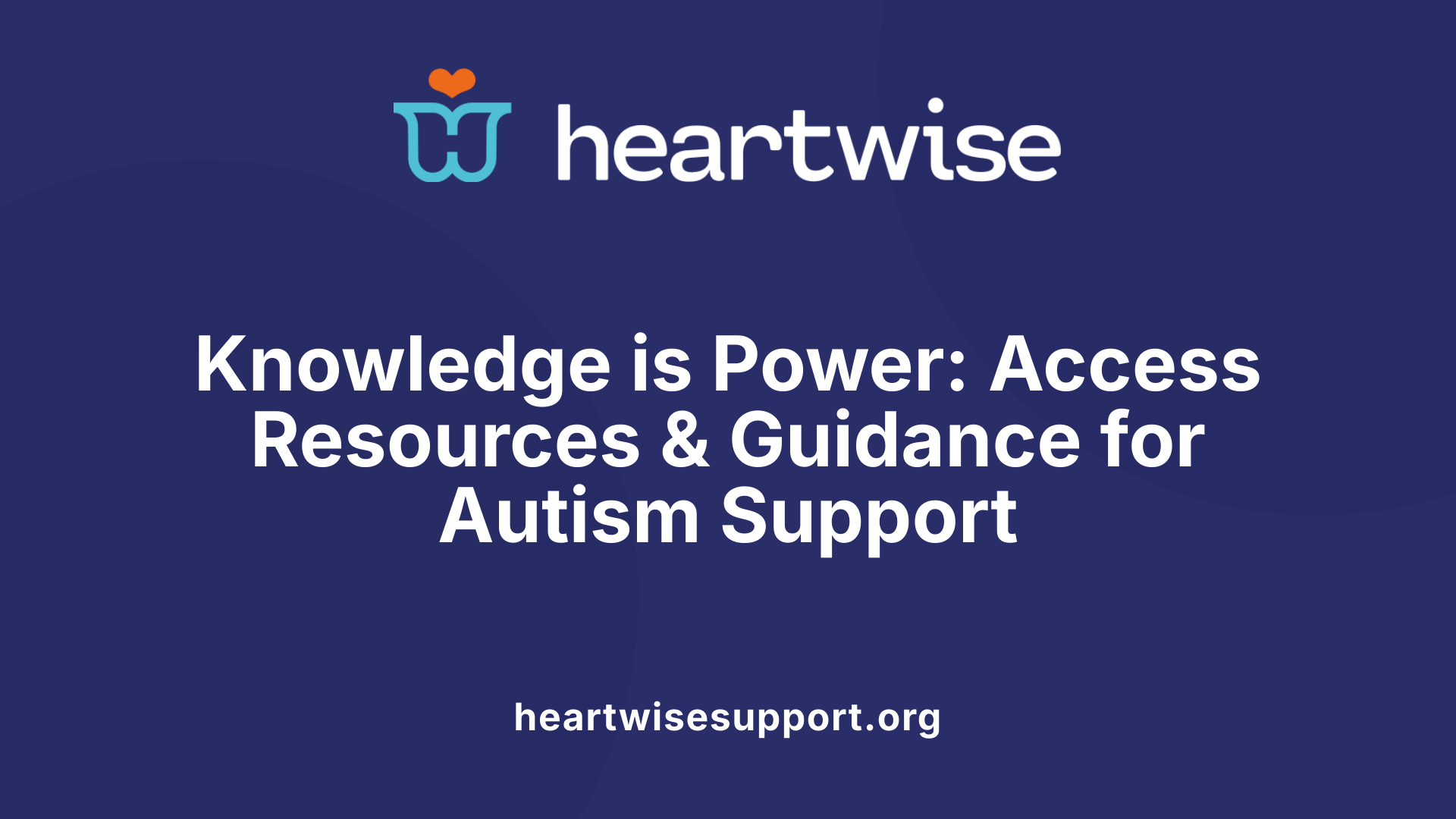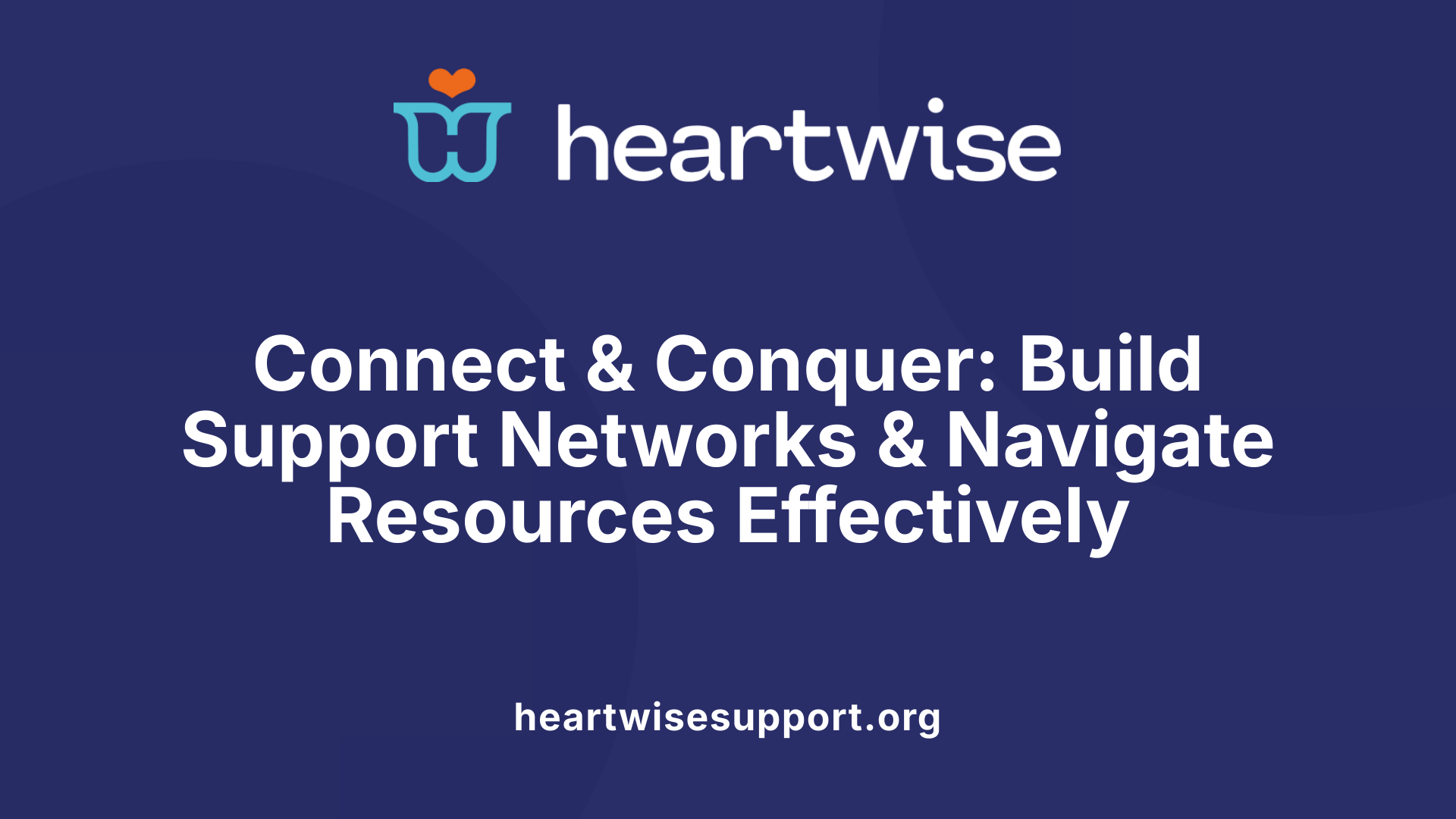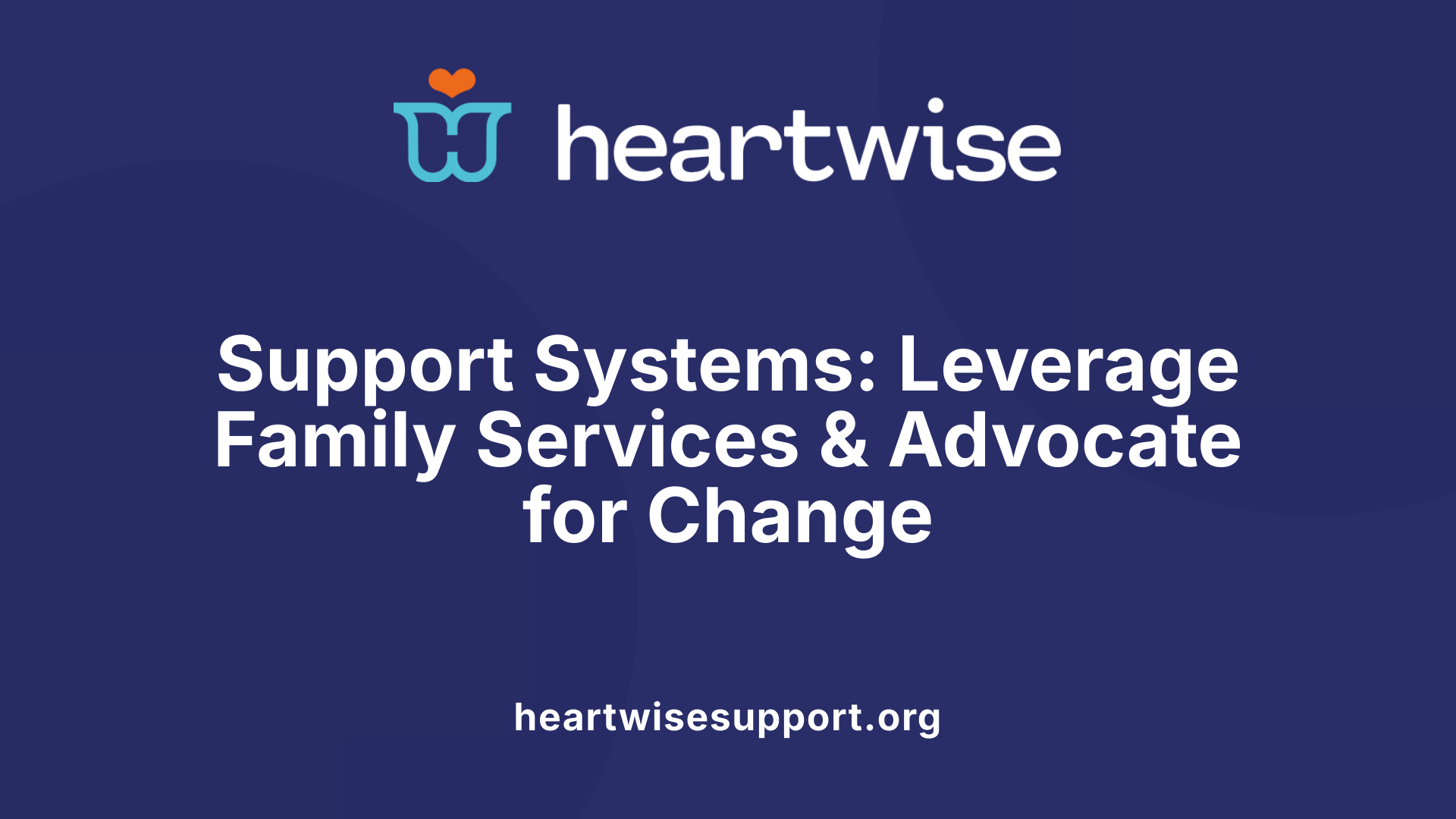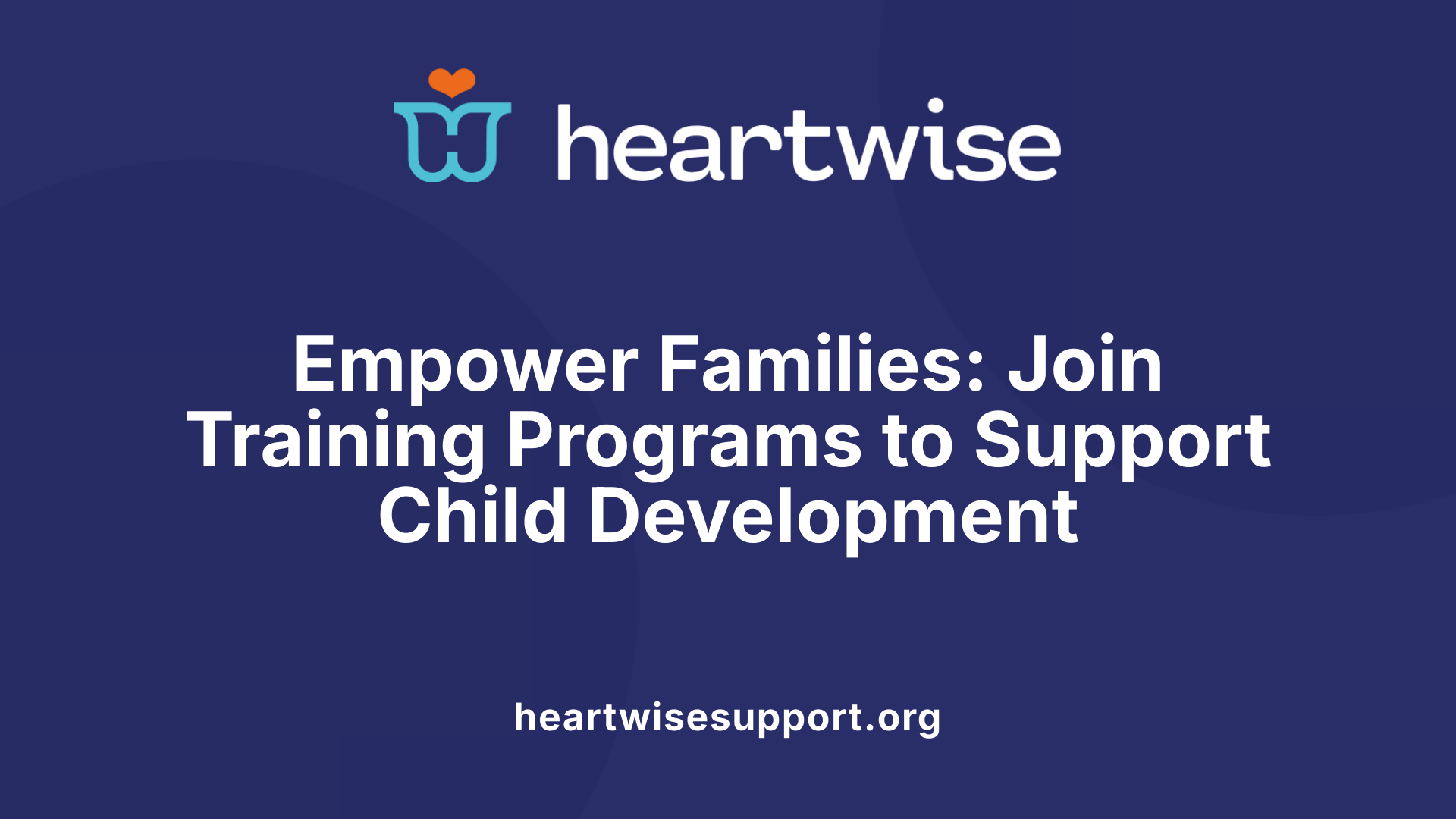Understanding the Foundations of Family-Centered Autism Support
Caring for a child with autism spectrum disorder (ASD) presents unique challenges and rewards. Family support strategies are essential to empower caregivers, enhance their well-being, and foster optimal development for their children. This comprehensive guide explores effective interventions, self-care practices, community involvement, and innovative approaches designed to create a resilient, informed, and connected support network for families navigating autism care.
Educational Resources and Family Empowerment

What type of education and information should be provided to families and caregivers of children with autism?
Families and caregivers of children with autism need comprehensive, evidence-based information about the disorder. This includes understanding autism’s core symptoms, early signs, and diagnostic criteria. Providing clear, accessible knowledge helps parents recognize developmental concerns early and seek timely intervention.
Access to evaluation resources is vital. Families should be guided toward specialized healthcare providers, diagnostic centers, and assessment tools that can assist in early diagnosis. Knowledge about different therapeutic options is equally important.
Interventions like Applied Behavior Analysis (ABA), Floortime, TEACCH, and speech therapy each offer unique approaches to support communication, social skills, and behavior. Educating families about these options allows for better-informed decision-making tailored to their child's needs.
Support services form a crucial part of family empowerment. These include parent training programs, support groups, respite care, and educational resources. Such services help caregivers manage daily challenges, reduce stress, and foster community connections.
Guidance on safety, legal rights, and community resources is also essential. Families should be aware of their child’s legal protections and know where to access services and support networks.
Lastly, ongoing education fosters self-advocacy and awareness of policy updates related to autism. Being informed enables families to advocate for their children effectively, participate in policy discussions, and stay updated on the latest research and intervention strategies.
Through accessible information and supportive resources, families can confidently navigate the journey of autism care, optimizing outcomes and quality of life for their children.
Implementing Social and Behavioral Strategies at Home and in the Community
Naturalistic developmental behavioral interventions (NDBIs) such as the Early Start Denver Model (ESDM) and JASPER are highly effective in supporting social interactions for children with autism. These approaches integrate behavioral strategies within natural settings, like home and community, and focus on child-preferred activities to promote engagement and communication.
Parent-led interventions like Project ImPACT and JASPER teach caregivers how to develop their child's social communication and play skills. These programs use modeling, guided practice, and feedback to help parents incorporate strategies into daily routines, fostering improvements in social behaviors and boosting caregiver confidence.
Caregiver involvement is central to these approaches. By modeling behaviors, practicing skills alongside their children, and receiving constructive feedback from professionals, parents can enhance their effectiveness and contribute to positive developmental outcomes.
To promote better communication and reduce challenging behaviors, strategies such as function-based interventions are essential. These include conducting functional assessments to identify what triggers certain behaviors, allowing caregivers to develop personalized plans that include teaching alternative communication methods and modifying the environment.
Addressing triggers involves understanding the purpose behind behaviors—whether they are attempts to communicate, escape from demands, or sensory seeking—and adapting settings or routines to minimize these triggers. Implementing visual supports like picture schedules, using augmentative communication tools such as PECS, and creating calming environments help manage sensitivities and promote self-regulation.
Early intervention approaches emphasize working within natural routines—like mealtime, bath time, or play—to teach social and communication skills. These routines encourage children to initiate interactions and use functional communication, making learning relevant and consistent across settings.
By combining these methods, caregivers and practitioners can foster meaningful social connections, improve communication, and diminish challenging behaviors, ultimately supporting individuals with ASD in their development and daily functioning.
Supporting Autistic Children with Effective Tools and Techniques
What are effective techniques and tools to support autistic children at home or remotely?
Supporting autistic children effectively involves a range of strategies and tools designed to enhance their daily functioning, communication, and social skills. Visual supports, such as picture schedules and visual cues, help children understand routines and expectations, promoting independence and reducing anxiety.
Structured routines provide predictability, which is comforting for children with ASD. These routines can include designated times for activities like dressing, meals, and therapy sessions, often supported by visual calendars or timers.
Sensory tools—such as weighted blankets, calming jars, and sensory bins—help regulate heightened sensory sensitivities. These tools create calming environments and improve sensory processing.
In addition to physical supports, technology plays a crucial role. Assistive devices like Augmentative and Alternative Communication (AAC) tools, including picture exchange systems and speech-generating devices, facilitate communication for non-verbal children. Educational apps tailored to developmental levels reinforce learning and behavioral goals.
Remote therapies, utilizing telehealth platforms, enable access to speech-language, occupational, and behavioral interventions from home. Online parent training programs empower caregivers with strategies to manage behaviors and support learning. Virtual classroom activities and social skills groups foster socialization and emotional growth without geographical barriers.
In-home interventions—such as speech therapy, occupational therapy, and play-based activities—are customized to meet the child’s unique developmental needs. These interventions focus on developing practical skills, sensory regulation, and social interactions.
Merging evidence-based strategies with available technologies and remote support options creates a flexible and comprehensive network that promotes independence and social-emotional well-being. Caregivers can build a supportive environment where children thrive through consistent routines, innovative tools, and accessible therapies, regardless of location or resource constraints.
Family Involvement and Collaboration in Autism Care
How can families be involved and supported in autism care?
Families play a crucial role in supporting their child's development in autism care by actively participating in intervention strategies integrated into daily routines. This involvement includes implementing behavioral and communication techniques learned through caregiver training programs like Project ImPACT and JASPER, which teach parents how to foster social interaction and language skills.
Effective support also involves collaborative planning with health and educational professionals. Family input during the development of individual care plans ensures that interventions are tailored to the child's strengths and needs. This personalized approach increases relevance and effectiveness.
Maintaining ongoing communication with therapists, educators, and other service providers is vital. Regular updates, feedback, and shared goal setting foster a strong partnership, allowing adjustments based on the child's progress.
Connecting families to community resources such as local support groups, respite care, and educational programs can alleviate stress and provide emotional and practical assistance. Peer support networks, especially those facilitated through online platforms and local groups like grandparents' support groups, offer shared experiences that can enhance parental resilience.
Building parental resilience is also supported by stress reduction techniques such as mindfulness, peer support, and relaxation strategies. Participating in support groups and accessing family support specialists provides emotional relief and practical advice, empowering families to manage daily challenges more effectively.
A comprehensive, family-centered approach emphasizes active participation, continuous collaboration, and access to resources, helping parents and caregivers to stay engaged and confident in their vital role. This cohesive support system promotes better developmental outcomes for children with autism and sustains family well-being.
Building Networks and Navigating Resources

How can families build social connections and navigate resources to support autistic individuals?
Families seeking to support autistic individuals can enhance their social networks by actively engaging with local support groups, advocacy organizations, and community services. These resources often provide opportunities for social skills training, peer interactions, and recreational activities tailored for autism. Attending community events, joining interest-based clubs, or participating in online communities like forums and social networks can help foster meaningful relationships.
Programs such as PEERS and ABA are valuable in supporting social skills development. They focus on teaching social norms, turn-taking, and communication strategies through structured activities and personalized coaching. These programs not only improve social interactions for autistic individuals but also empower caregivers with tools to support their loved ones effectively.
Encouraging self-advocacy is essential, as it helps individuals understand social expectations and express their needs confidently. Creating inclusive environments is equally important—spaces that embrace differences and promote shared interests encourage lasting connections. When families work together to build supportive friendships, they help create a robust network that enhances emotional well-being, independence, and happiness for autistic individuals.
Incorporating these strategies can help families navigate available resources efficiently and foster a sense of community and belonging—vital components in supporting lifelong development and quality of life for those on the spectrum.
Fostering Caregiver Well-Being and Resilience
What self-care practices and resources are available for autism caregivers?
Caring for a child with autism can be emotionally demanding, making self-care practices essential for maintaining overall well-being. Engaging in regular physical activity, such as walking, yoga, or sports, helps reduce stress and boosts physical health.
Mindfulness techniques, including meditation and deep breathing exercises, can foster emotional resilience and present-moment awareness. Maintaining social connections through support groups or online communities offers emotional support and shared understanding from others facing similar experiences.
It is also beneficial for caregivers to pursue hobbies and personal interests, providing a mental break from caregiving responsibilities. Taking advantage of respite care services—where trusted individuals or organizations temporarily care for the child—gives caregivers needed time to rest and recharge.
Creating personalized self-care plans—such as journaling feelings, tracking energy levels, and setting realistic goals—helps caregivers identify what activities best restore their strength. Professional counseling or therapy can be an additional resource for processing emotions and developing coping strategies.
Family or community support programs, like family support specialists, offer guidance, resources, and emotional reassurance. Staying informed about available resources and advocating for oneself ensures caregivers can access the help they need to sustain their caregiving roles effectively.
Implementing these practices consistently can significantly enhance caregiver resilience, reduce burnout, and promote a balanced, healthier lifestyle for those supporting individuals with autism.
Supporting Autistic Adults and Promoting Independence
How can families support autistic adults?
Supporting autistic adults involves a combination of respect, encouragement, and creating supportive environments tailored to their unique needs. Families play a vital role in fostering independence by encouraging employment opportunities, facilitating social interactions, and promoting self-advocacy.
Developing routines and life skills, such as managing daily activities and taking responsibility for personal care, helps adults on the spectrum lead more autonomous lives. Building environments that acknowledge sensory sensitivities and communication preferences ensures greater comfort and engagement.
Support should always be delivered with empathy and patience. Tailoring interventions and supports to individual strengths and preferences reinforces their autonomy and dignity.
Creating avenues for meaningful community involvement and continuous learning enhances their social inclusion and well-being. This can include participation in community groups, vocational training, and encouragement to express personal interests.
Ultimately, fostering a sense of independence, along with ongoing support, enables adults on the spectrum to enjoy fulfilling, autonomous lives. Emphasizing strengths and promoting self-advocacy are essential components of lifelong development.
| Support Strategies | Focus Area | Additional Details |
|---|---|---|
| Respectful Routines | Daily Living | Customized routines to reduce anxiety and support independence |
| Employment Support | Vocational Skills | Pathways to meaningful work and skill development |
| Social Engagement | Community Integration | Opportunities for socialization through shared interests |
| Sensory and Communication Accommodations | Environment | Creating sensory-friendly spaces and communication tools |
| Self-Advocacy and Education | Empowerment | Encouraging self-awareness and decision-making |
| Lifelong Learning | Development | Continuous access to educational and developmental resources |
Understanding the Role of Family Support Services and Policies

How do family support services and policies enhance autism caregiving?
Family support services play a vital role in helping parents, siblings, and other family members manage the challenges of raising a child with ASD. These services often include resources, education, coaching, and advocacy to empower families and improve their ability to support their loved ones.
Organizations like The Autism Project provide comprehensive support by offering navigation assistance through complex systems such as Medicaid and SSI, educational programs, coaching, and emotional advocacy. These services reduce feelings of isolation, enhance access to necessary resources, and foster a sense of community among families.
Support programs often incorporate family-centered models like DIR/Floortime, which focus on reducing family stress and strengthening family bonds through tailored interventions. The goal is to create a nurturing environment that promotes positive outcomes for individuals with ASD and their families.
The role of Family Support Specialists (FSS) in providing information and resources
Family Support Specialists are trained professionals, often Certified Community Health Workers, who have personal or professional experience with ASD. They serve as guides for navigating the complex landscape of services, including therapeutic programs, educational supports, and financial resources.
FSS help families understand how to access services, fill out paperwork, and connect with community agencies. Many support specialists are bilingual, providing crucial assistance in diverse communities.
Access to services like Medicaid, SSI, and therapeutic support
Accessing government and community resources such as Medicaid and Supplemental Security Income (SSI) can significantly ease financial burdens. Therapeutic services, including behavioral therapy, speech therapy, and occupational therapy, are critical for developmental progress.
Support specialists assist families in securing these benefits, ensuring timely and appropriate care. They also help families understand eligibility criteria and guide them through application processes.
Parent training programs like 'Parent to Parent' and 'A Starting Point' available in multiple languages
Parent training programs are designed to equip caregivers with skills in behavioral management, communication, and daily routines. Programs such as 'Parent to Parent' and 'A Starting Point' offer role-playing, didactic instruction, and coaching that build caregivers' confidence and competence.
Recognizing diverse needs, these programs are often available in multiple languages, including English and Spanish, ensuring accessibility for families from different cultural backgrounds.
Support groups such as grandparents’ groups that offer community and shared experiences
Support groups foster community connections and provide emotional support through shared experiences. Grandparents’ groups, for example, offer a space for older caregivers to share insights, coping strategies, and encouragement.
These community-driven groups help reduce feelings of isolation and provide practical advice, reinforcing the importance of social networks in caregiving.
The importance of community-based systems in empowering families
Community-based systems, including local clinics, support organizations, and advocacy groups, are fundamental in creating an empowering environment for families. They facilitate access to tailored services, promote awareness, and advocate for family needs.
By strengthening these systems, families can better navigate available resources, participate actively in intervention planning, and foster a positive, supportive environment for individuals with ASD.
| Aspect | Description | Additional Details |
|---|---|---|
| Services | Navigation, education, coaching, advocacy | Help with system access, empowerment, and emotional support |
| Family Support Specialists | Certified community health workers | Provide guidance, bilingual support, resource connection |
| Resources | Medicaid, SSI, therapy | Financial relief, developmental services |
| Parent Programs | 'Parent to Parent,' 'A Starting Point' | Role-playing, multi-lingual, caregiver training |
| Community Groups | Grandparents’ groups, peer networks | Emotional support, shared experiences |
| System Impact | Reduces stress, promotes cohesion, advocates | Build resilient, informed families for better outcomes |
Supporting families through dedicated services and policies fosters a stronger foundation, enabling them to better support their children with autism and creating healthier, more inclusive communities.
Early Intervention and Family Training for Optimal Outcomes

Why is early diagnosis and intervention important, ideally before age six?
Early diagnosis is crucial because it allows intervention during a sensitive period of brain development. Starting support before age six can significantly improve social, language, and cognitive skills. The earlier children receive targeted therapy, the better their chances of making substantial progress, thanks to the brain's heightened plasticity at this stage.
What are some early intervention strategies for children with autism?
Early intervention involves a mix of therapeutic approaches tailored to each child's needs. Common strategies include speech therapy to support communication, applied behavior analysis (ABA) to reduce challenging behaviors and teach new skills, occupational therapy to enhance daily living and sensory processing, and social skills training to foster interactions. Techniques such as social stories, PECS (Picture Exchange Communication System), and sign language help non-verbal or minimally verbal children develop functional communication. Floortime and music therapy are also used to stimulate engagement and emotional development.
How does family involvement enhance early intervention?
Family participation is vital. Training parents to implement naturalistic, child-led interventions can promote consistent learning throughout daily routines. Engaging in activities like play and routines such as dressing or mealtime supports social attention and communication. Parent-mediated interventions, including methods like the Infant Start Manual and other coaching programs, empower caregivers to carry on therapy outside clinical settings.
What programs support parent training and early intervention?
Programs like the Infant Start Manual, an extension of the Early Start Denver Model, focus on supporting infants’ social interactions through family-centered coaching. Other parent-focused programs teach caregivers strategies for promoting communication and social engagement, often through role-playing, modeling, and practice assignments.
How to build a collaborative team for early intervention?
Effective intervention relies on teamwork. This team typically includes therapists, educators, and caregivers working together. Clear communication and shared goals are essential. A collaborative team helps tailor intervention plans to family routines and cultural contexts, ensuring the support is practical and sustainable.
How do interventions foster early social attention, functional communication, and reduce challenging behaviors?
Promoting early social attention involves engaging children through interests and routines, using eye contact, and responding to cues. Functional communication is supported by teaching children ways to express needs and desires, such as using PECS or sign language. Challenging behaviors are addressed by understanding their functions and introducing strategies to replace. These efforts create a foundation for social participation and better quality of life.
| Focus Area | Strategies | Outcomes |
|---|---|---|
| Early diagnosis | Screenings, family reports | Timely intervention, improved prognosis |
| Communication | Speech therapy, AAC | Better expressive and receptive skills |
| Social skills | Play, peer interaction, Floortime | Increased engagement, social understanding |
| Behavior management | ABA, functional assessments | Reduced problematic behaviors |
| Family training | Parent coaching, role-playing | Empowered caregivers, consistent routines |
Understanding and implementing these early, family-centered approaches can dramatically improve development trajectories for children with autism, fostering a supportive environment that nurtures growth and learning.
Building a Resilient Foundation for Autism Support
Empowering families with knowledge, resources, and emotional support is vital to fostering positive outcomes for children and adults with autism. A comprehensive family-centered approach—integrating evidence-based interventions, self-care practices, community involvement, and policy support—builds resilience, enhances well-being, and promotes lifelong development. When families are equipped as active partners in care, they can navigate the complexities of autism spectrum disorder with confidence, fostering inclusive, supportive environments that celebrate neurodiversity and enable every individual to thrive.
References
- Advances in Supporting Parents in Interventions for Autism ...
- Self-Care for Family Members and Caregivers of Individuals with ...
- Autism Spectrum Disorder Care Tips for Family Caregivers
- Working with Families of Children with Autism Spectrum Disorder
- Caring for the caregiver | Autism Speaks
- Autism Family Support: 6 Effective Care Tips - Skill Point Therapy
- Caregiver Strategies for Building Infant Social Interaction
- Enhancing autism care through remote support: A family-centered ...
- Coping Strategies for Autism Caregivers











